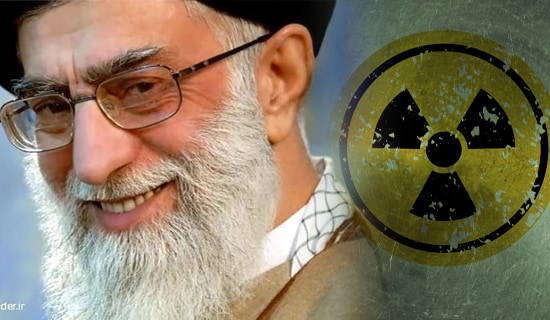China's domestically made Fujian aircraft carrier, its third, which was launched on June 17, 2022, is equipped with electromagnetic catapults and arresting devices. Commenting on the Fujian, renowned journalist Hu Xijin wrote in the Chinese Communist Party (CCP) mouthpiece Global Times that aircraft carriers are not only "the most convenient punching fist of a great power," but also "a symbol of national will and strategic deterrence."
He added, however, that "[w]hen China develops aircraft carriers, everyone thinks of the United States, but in fact if China and the United States go to war, aircraft carriers are not the only weight that determines the outcome. China will not be able to surpass the United States in aircraft carrier strength for many years to come, but our comprehensive combat capability in the Western Pacific makes it entirely possible to have an advantage over the United States."
Below is Hu Xijin's article:[1]

(Source: MEMRI TV Clip No. 9646, China Unveils The Fujian, Its Third Aircraft Carrier Launched In Ten Years, June 17, 2022)
'Our Comprehensive Combat Capability In The Western Pacific Makes It Entirely Possible To Have An Advantage Over The United States'
SUPPORT OUR WORK

"The Fujian, China's third aircraft carrier, was launched today. It has a full load displacement of more than 80,000 tons, and although still conventionally-powered, it is equipped with the most advanced electromagnetic catapult. It is clear that China will build more and more advanced aircraft carriers and eventually move towards nuclear-powered ones.
"The previous carrier, Shandong, was commissioned two years after its launch. After the carrier Fujian has attained its combat effectiveness, China's status as the second-largest power behind only the United States' surface ships will become clearer. Of course, the gap between China and the U.S. Navy is still very large. The U.S. currently has 11 aircraft carriers, all of which are nuclear powered and have a greater displacement than the Fujian. Many foreign media have compared the Fujian to the retired 'Kitty Hawk,' which also had a displacement of 80,000 tons. Commissioned in 1961 and retired in 2009, the 'Kitty Hawk' was stationed long-term in Yokosuka, Japan before its retirement. It is the U.S. aircraft carrier that has most demonstrated the U.S. military show of force to China.
"However, although the Fujian aircraft carrier is similar to the 'Kitty Hawk' in power and tonnage, its other onboard systems clearly surpass those of the 'Kitty Hawk.' As the Chinese Navy has not yet undertaken the requirements of ultra-long-distance operations and demonstrations, conventional power does not constitute a constraint on Chinese aircraft carriers implementing strategic deterrence in the western Pacific at present. In the future, China's construction of nuclear-powered aircraft carriers will give the navy greater room for imagination.
"Aircraft carriers are not only the most convenient punching fist of a great power, but also a symbol of national will and strategic deterrence. When China develops aircraft carriers, everyone thinks of the United States, but in fact if China and the United States go to war, aircraft carriers are not the only weight that determines the outcome.
"China will not be able to surpass the United States in aircraft carrier strength for many years to come, but our comprehensive combat capability in the Western Pacific makes it entirely possible to have an advantage over the United States. Nowadays, military powers can easily destroy any target as long as it is visible. This means that if the U.S. and China were to go to war, each side would be able to destroy the other's aircraft carriers in the war zone. As for China, our onshore missile force is absolutely superior, and several models of China’s 'Dongfeng' series of missiles are capable of instantly crippling American aircraft carriers.
'We Know How To Allocate And Use Our Power At The Right Time'
"The U.S. military will feel more and more pressure in the Western Pacific and will be forced to accept certain warnings from China. This trend will gradually become more apparent. China's defense budget currently accounts for only 1.3% of its GDP; reaching the 2% standard of NATO countries means increasing the budget by another US$100 billion per year. Moreover, China has the goal of doubling its GDP in the next decade. As long as part of the additional military budget can be allocated, the Navy will be able to acquire more world-class combat platforms.
"None of the neighboring Asian countries can challenge China alone in the 21st century, but neither is China's development of the navy aimed at its neighbors. Even with Japan, China’s mentality should gradually start to change. I don't think China is developing aircraft carriers to compete with the U.S. Navy one day. China's national power is a system, and the weak link in aircraft carriers must be fixed. China's manufacturing capacity is already the largest in the world, and our shipbuilding capacity is also the world’s largest. Let China gradually build the aircraft carriers that we should. The way that the United States and its allies view China will naturally change, and the manner in which they interact with China will also be reconsidered.
"Therefore, the Chinese people need to concentrate on their own development while maintaining full strategic confidence and patience. As long as we continue to develop, time is on China's side, and development itself will bring us more strategic resources, including more first-class aircraft carriers.
"As a matter of fact, China has been developing aircraft carriers step by step, not eager to rapidly expand the number, but taking a step forward in technology with each one built. This is an expression of strategic determination and calm. If renovated, many shipyards in China from north to south would be capable of carrying out aircraft carrier projects. If China wants to build a large number of aircraft carriers of the same class all in one go, we can do so, but we are focusing on the future game. Because China is confident that it can manage the changing pace of the situation, we know how to allocate and use our power at the right time, one step at a time, without missing a step."
[1] Mp.weixin.qq.com/s/zE0Mp1_0qHnSCYjRtD_dQQ, June 17, 2022.




